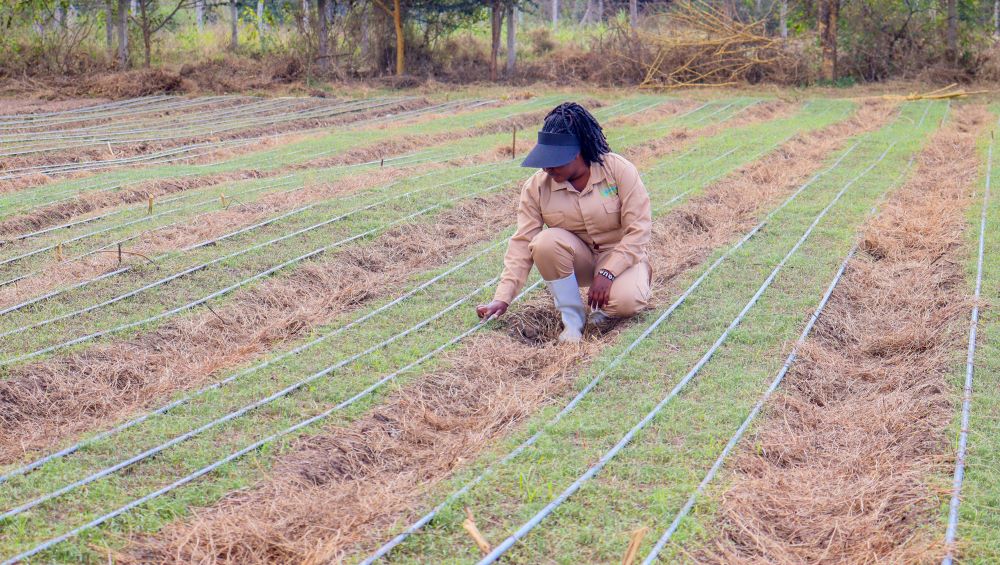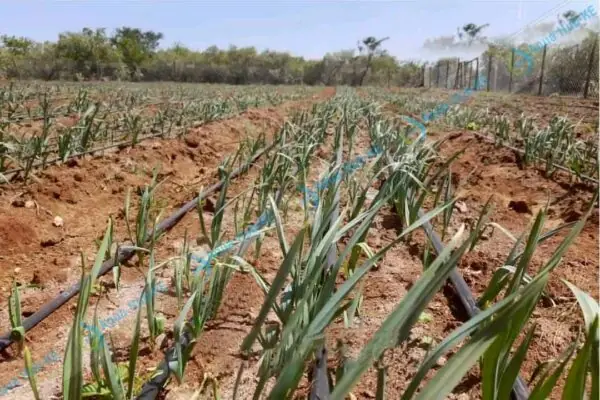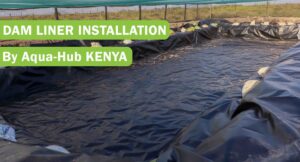Garlic farming in Kenya is gaining momentum among smallholder and commercial farmers alike. This aromatic and flavorful crop not only adds diversity to farm production but also offers strong market demand and solid profit potential.
This blog post explains everything about garlic farming from varieties, planting, irrigation and harvesting techniques for high income generation.
Health Benefits and Nutritional Value
Garlic is vital its nutritional and healthful properties:
- Rich in vitamins and minerals, including vitamin C, B6, manganese, and selenium.
- Powerful antioxidants like allicin help strengthen immunity, reduce blood pressure, and support heart health.
- Antimicrobial effects combat bacteria, fungi, and viruses making it not just food, but a functional ingredient.
These benefits make Kenyan garlic attractive not only to culinary consumers but also to health-minded buyers.
Varieties of Garlic Grown in Kenya
Kenyan farmers typically cultivate two main garlic types:
- Hard neck Garlic – Known for strong, sharp flavor, sturdy flower stalks (scapes), but produces fewer cloves.
- Soft neck Garlic – Known for softer necks, milder taste, more cloves, and better storage life ideal for markets and longer supply chains.
Profitability of Garlic Farming in Kenya
Garlic farming is one of the highly profitable agricultural ventures in Kenya. If it is done right, the garlic produce returns outweighs the costs for seed, fertilizer, pest control, labour and irrigation. Value addition such as grading further enhances profit. Plus, a garlic crop’s short growing cycle (about 4–5 months) allows for multiple harvests per year, optimizing land use.
Popular Garlic Varieties in Kenya
Farmers in Kenya often select from varieties known for adaptability, yield, and disease resistance. The popular garlic varieties are shown in the table below.
| Garlic Variety | Variety | Flavor |
| Africa Giant | Soft neck | Strong |
| Arusha Giant | Soft neck | Strong |
| Rwanda Giant | Soft neck | Strong |
| Elephant Garlic | Hard neck | Mild |
| Creole Garlic | Hard neck | Strong |
| Purple Streak | Hard neck | Strong |
| Spanish Roja | Soft neck | Mild |
| Italian White | Soft neck | Mild |
| Pearl Garlic | Soft neck | Mild |
| Chinese Flat Garlic | Soft neck | Strong |
It is important to always grow garlic varieties that match your climate, market demand, and budget.
Climatic and Soil Requirements for Garlic Farming
Garlic does well when grown in areas with:
- Cool temperatures (10–25 °C) during growth.
- Well-drained, fertile soil, rich in organic matter, with pH 6.0–7.0.
- Good drainage to prevent bulb rot.
- Full sun to encourage root and bulb development.
These conditions often match to the highland regions of Kenya. However, Garlic farming can also be done through irrigation in low rainfall areas such as Kajiado, Narok, Laikipia, and Garissa.
Cost of Garlic Farming in Kenya
Costs vary by scale and method, but common expenses include:
- Seed Garlic – Quality cloves for planting.
- Land preparation – Tilling, ridging.
- Fertilizers & soil amendments – Manure, compost, and inorganic fertilizers.
- Irrigation systems – Especially important where rainfall is insufficient.
- Labor – For planting, weeding, harvesting, and post-harvest work.
- Packaging and transport – For market access.
Garlic Farming cost in Kenya can range from KES 120,000 to 250,000 per acre inclusive of drip kits, labour and seedlings.
How Garlic Farming through Irrigation is Done
Irrigation is essential for consistent moisture availability which is ideal for garlic bulb development. Drip Irrigation is the most effective way to water garlic plants because it delivers water to the roots and minimal water goes to waste.
Regular watering (about every 7–10 days) during growth stages helps uniform development without waterlogging.
Garlic Farming Drip Kits and Prices in Kenya

Garlic farming drip kits are available at affordable prices in Kenya from Aqua Hub LTD from KES 85,000 to KES 190,000 per acre. Our drip Kit prices often depend on the number of lines laid per bed. For example, garlic beds that uses three driplines per bed will cost KES 185,000 for a complete drip irrigation system.
What are the Components of Our Garlic Drip Kits?
- HDPE Mainline Pipes
- Sub mainline HDPE Pipe
- Tank Connector
- Male and Female adapter
- HDPE Tee, Elbow and End Caps
- Ball Valves
- Driplines (available in 15cm, 20 cm and 30 cm emitter spacing)
- Drip Connectors (Start, drip valves and end plug)
- Screen or Disc Filter
- Laterals
- Saddle Clamps
Steps for Planting Garlic
1. Which Garlic Variety to Grow?
There are two types of garlic varieties in Kenya.
- Hard neck Garlic – Strong flavour, fewer cloves, short storage.
- Soft neck Garlic – More cloves, mild taste, longer shelf life.
Consider the flavour, size of garlic bulbs, climatic requirements and market demand when choosing which garlic variety to grow.
2. Timing Your Garlic Planting
- Ideal planting time in Kenya is during the cool dry season, around April – June in highlands.
- Plant cloves just before the rains in October – November in milder areas.
3. Preparing Garlic Planting Beds
- Plow or till the land to 20 cm depth.
- Add compost or well-rotted manure to enhance fertility.
- Create 10–15 cm high ridges for bulb drainage.
4. Planting Your Garlic
- Separate cloves; plant largest for best results.
- Space cloves 10–15 cm apart, in rows 20–30 cm apart.
- Place clove with pointed end up, 2–3 cm deep.
- Cover, then firm soil lightly.
5. Caring for Garlic as It Grows
- Apply balanced fertilizer 4–6 weeks after emergence.
- Weed regularly to reduce competition.
- Mulch to retain soil moisture and suppress weeds.
6. Harvesting and Storing Garlic
- Harvest when 60–80% of tops fall or bulbs are mature (4–5 months after planting).
- Lift bulbs carefully; cure by air-drying in shade for 2–3 weeks.
- Store in cool, dry, ventilated places in nets for longer shelf life.
Garlic Crop Management
1. Weed Management
- Weeds compete for nutrients. Hand weeding or light cultivating is essential.
- Mulching helps suppress regrowth and maintain moisture.
2. Diseases
- Common diseases include white rot, downy mildew, and basal plate rot.
- Prevent with disease-free seed, crop rotation (3–4 years), and good drainage.
3. Pests
- Watch out for root-knot nematodes, onion thrips, and bulb mites.
- Control with clean planting materials, spacing, natural enemies, and careful use of approved products.
4. Water Management
- Garlic needs near-constant, moderate moisture, especially in bulb formation stage.
- Overwatering leads to rot; under-watering reduces bulb size.
- Drip helps maintain even moisture; about 25–30 mm per week depending on soil.
Harvesting and Post‑Harvest Handling of Garlic
Harvest when leaves begin to yellow and fall over naturally. Mature bulbs have tight papery skins. Lift bulbs gently, shake off soil, and cure them for 2–3 weeks in a cool, airy, shaded area. Once dried, trim roots and necks; sort based on size and quality. Packaging in mesh bags or braids is common in Kenya to ensure good airflow and easier storage. Store garlic in well-ventilated spaces, away from direct sun, at temperatures around 15–18 °C; properly cured and stored bulbs can last several months.
Summary
Garlic farming in Kenya is a highly promising venture thanks to the crop’s health benefits, growing market demand, and adaptability to highland conditions. Whether you’re starting small or scaling, understanding the right variety, timing, soil prep, irrigation method (like drip), and careful crop management can help you harvest success. With smart investments in seeds, drip kits, and post‑harvest handling, alongside effective cost control, many farmers achieve excellent returns.





